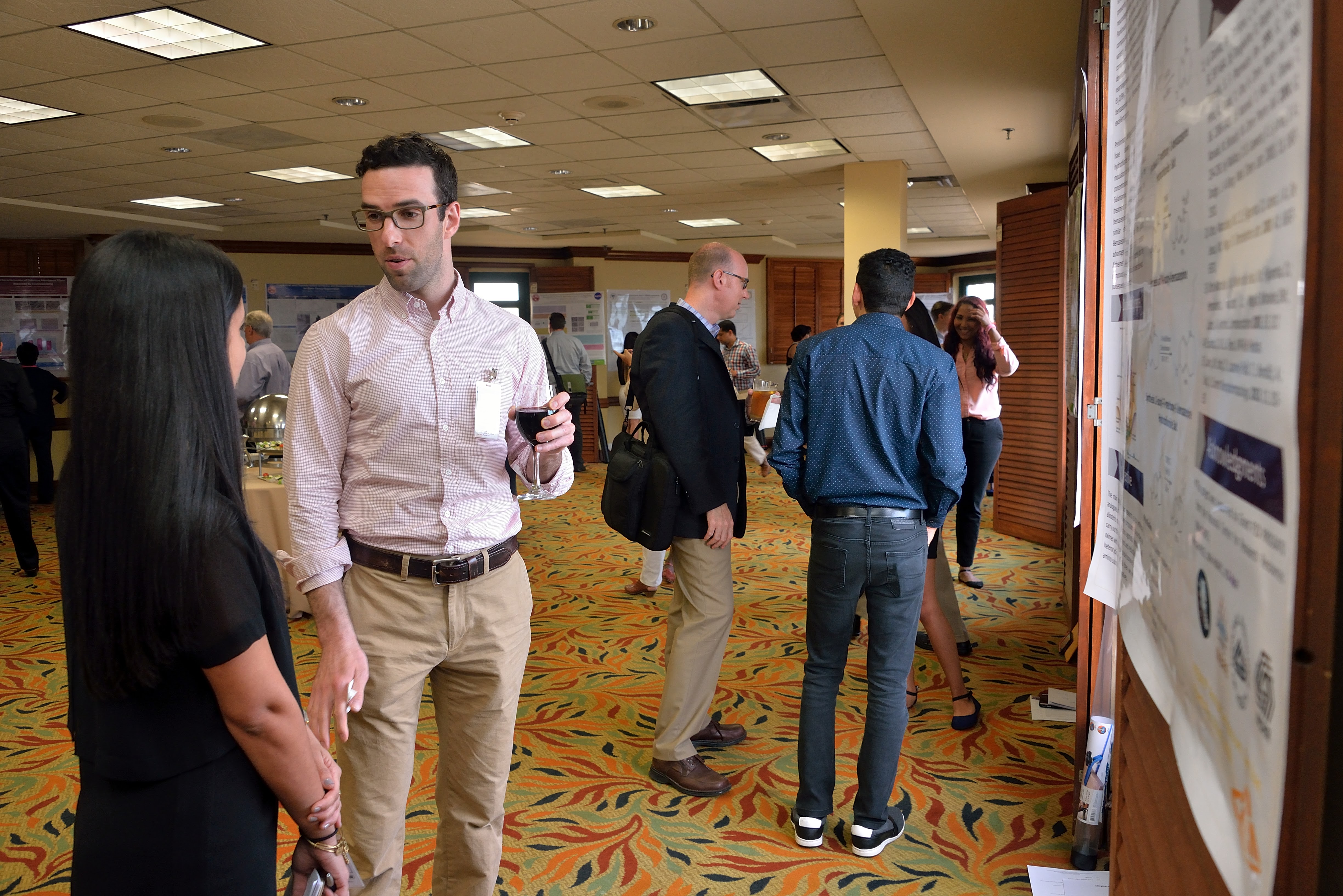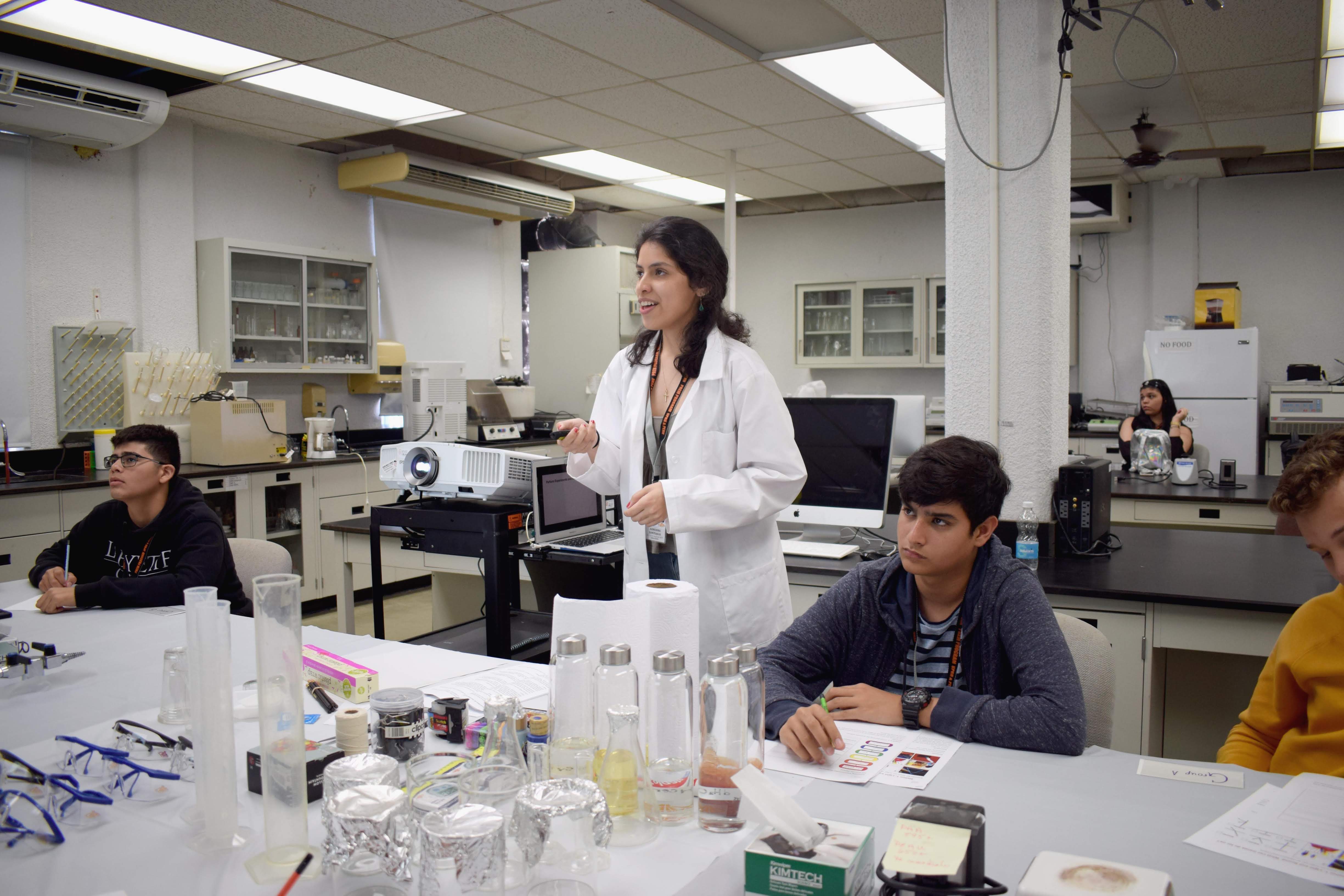The National Science Foundation (NSF) has awarded grants to eight study teams to assistance partnerships that will increase range in cutting-edge components study, education and learning, and vocation growth. Just one of individuals groups is Penn’s Laboratory for Analysis on the Structure of Issue (LRSM) and the University of Puerto Rico (UPR), whose prolonged-managing collaboration has now gained an further 6 many years of aid.
With the purpose of supporting partnerships between minority-serving instructional establishments and top materials science investigation facilities, NSF’s Partnership for Exploration & Education in Materials (PREM) application money modern study systems and gives institutional guidance to maximize recruitment, retention, and graduation by underrepresented groups as properly as giving underserved communities accessibility to components exploration and education and learning.
‘Research at the frontier’
With this PREM award, acknowledged as the Advancing Machine Innovation as a result of Inclusive Research and Education and learning (ADIIR) plan, scientists from Penn and UPR’s Humacao and Cayey campuses will conduct investigation on the houses of novel carbon-based supplies with distinctive attributes, and will review the outcomes of area modification in new courses of sensors, detectors, and purification units.
Many thanks to this collaboration of additional than 20 a long time, both equally institutions have built major scientific and educational progress aided by biannual symposia and frequent pre-pandemic vacation between both equally institutions ahead of the pandemic, ensuing in a abundant portfolio of publications, meeting displays, patents, students properly trained, and outreach applications.
“Together we have been publishing fantastic papers that have impression, and we’ve definitely cultivated a tradition of collaboration and friendship between our institutions,” states Penn’s Arjun Yodh, previous director of the LRSM. “Our aim is to have out exploration at the frontier and, in the approach, nurture promising pupils from Puerto Rico and Penn.”
Ivan Dmochowski, a chemistry professor at Penn who has been associated with PREM for several decades, states that this program has helped his group link with gurus in Puerto Rico whose skills enhance his group’s interests in protein engineering. Dmochowski has also hosted UPR school members and college students in his lab and also travelled to Puerto Rico in advance of the pandemic to take part in analysis symposia, seminars, and outreach events.
“I’ve had students who have benefitted from remaining a co-creator on a paper or having a probability to mentor pupils, and the college we’ve interacted with are fantastic,” Dmochowski states. “There’s a large amount of reward for each me and my students, and I have enjoyed our interactions each personally and scientifically.”
Penn’s Daeyeon Lee, a chemical and biomolecular engineering professor who has been associated with PREM for quite a few yrs, on a regular basis hosts students and faculty from UPR while doing work on nanocarbon-dependent composite films for sensor programs. The results of this collaboration depends on exclusive supplies built by scientists at UPR put together with a approach for processing them into composite buildings formulated in Lee’s lab.
“What I seriously admire about individuals at PREM, the two college and students, is their enthusiasm,” states Lee. “I imagine that’s experienced a definitely constructive effect on my college students and postdocs who obtained to interact with them for the reason that they obtained to see the enthusiasm that the learners introduced.”
Supporting STEM pathways
One more focus of PREM is to enhance participation in STEM occupations by minorities and women of all ages. “A emphasis on range of students, faculty, and companions, paired with the revitalization of beneath-resourced analysis, is the foundation of PREM and has been the supply of many thriving results,” states Debasis Majumdar, director of the PREM application. “It expands national innovation capacity and a significantly wanted, really skilled, and various workforce, propelling U.S. management in STEM fields.”
Making use of PREM’s “pathways” solution, the Penn and UPR partnership will engage Hispanic, girls, and Afro-Latin students from deprived backgrounds, like reduced-cash flow college students, initial-technology college students, and all those dwelling in rural parts, with resources science and engineering investigation and training. This contains coordinating outreach pursuits with K-12 universities, communities, and undergraduate institutions in Puerto Rico and offering mentorship and research chances by means of summertime systems, including the LRSM’s Research Knowledge for Undergraduates (REU) system.
Kevin Alicea-Torres, who concluded his Ph.D. in Penn’s Mobile and Molecular Biology System, will guide the science education and outreach things to do in Puerto Rico as PREM’s new director of schooling. “Throughout my job I have acquired that visibility and representation issues in STEM. Our inclusive science education and outreach strategies will focus on showcasing the operate of material researchers and engineers from underrepresented backgrounds as a way to deliver position types to inspire and empower the following generation,” claims Alicea-Torres, who was the recipient of a Penn graduate scholar management award for founding Penn’s Chapter of the Culture for Development of Chicanos/Hispanics and Native People in america in Science.
A person PREM alumna who benefitted from this pathways technique is Adriana Santiago-Ruiz, a present biochemistry and molecular biophysics Ph.D. scholar. She initial became involved with PREM in high school by “experimenta con PREM” summer classes for high college college students and, though studying chemistry at UPR-Cayey, participated in two REU programs, such as 1 at the LRSM. Immediately after finishing an NIH-sponsored postbaccalaureate software, also at Penn, she is now pursuing her tutorial interests in biophysics although continuing to have an energetic role in PREM actions.
Even though Santiago-Ruiz was to begin with unsure about what vocation she wanted to pursue, connecting with PREM as a result of outreach, and later by way of undergraduate research, served her gain self confidence to grow to be involved in study. “Doing the REU here at Penn served me define additional concretely what I wanted to do and pushed me to the restrict, and it is why I’m below and why I get pleasure from what I am accomplishing,” she suggests. “It aided open my eyes to the solutions you have. The alternatives are infinite, and there are also individuals in the courses who are there to assist you.”
A continued aim on fostering STEM pathways for underrepresented groups also aligns with LRSM’s aim on education and learning, outreach, and maximizing the range of its scholarship. “This is actually a partnership the place everyone at Penn also positive aspects, from graduate pupils and postdocs to college and workers in general, and it is prosperous mainly because everyone is fully commited to its objectives,” suggests Mark Licurse, director of education and outreach at the LRSM.
And as a Resources Investigation Science and Engineering Center (MRSEC), the LRSM is also able to join UPR school and learners with its state-of-the-artwork amenities, delivering researchers from undergraduate-serving establishments with access to leading-tier gear to further their work. “We’re attempting to make certain that we deliver pathways for students to come listed here, to accessibility instruments that are linked to issues they’re fascinated in, and to entry pupils and school who can help them,” suggests Eric Stach, LRSM director and co-PI of the PREM award.
Continuing fruitful collaborations
Penn and UPR researchers are excited for what the upcoming 6 a long time of PREM will deliver and are wanting forward to the return of travel, lab visits, and in-human being events as soon as pandemic constraints are lifted. “There’s a circulation of persons back again and forth that we’re wanting forward to rejoining in get to have trade in facts and exploration collaboration happen equally techniques,” claims Stach.
“We are very thrilled with this new NSF award and the opportunity to continue on collaborating with Penn,” claims Idalia Ramos, professor in the Section of Physics and Electronics and principal investigator of the PREM award at UPR Humacao. “Our extended partnership will be revitalized with the addition of college from UPR and Penn and a new application of investigate and instruction pursuits. Importantly, with this collaboration, we will go on attracting underrepresented students to supplies investigate and preparing them to go after superior degrees in science and engineering.”
Ivan Dmochowski is a professor in the Division of Chemistry in the School of Arts & Sciences at the College of Pennsylvania.
Daeyeon Lee is a professor and the Evan C Thompson Phrase Chair for Excellence in Instructing in the Division of Chemical and Biomolecular Engineering in Penn’s University of Engineering and Applied Science.
Adriana Santiago-Ruiz is a Ph.D. student in the Biochemistry and Molecular Biophysics Graduate Group in Penn’s Perelman University of Medicine.
Eric Stach is a professor in the Department of Materials Science and Engineering in Penn’s College of Engineering and Utilized Science. He is also the director of the Laboratory for Analysis on the Construction of Matter.
Arjun Yodh is the James M. Skinner Professor of Science in the Office of Physics & Astronomy in Penn’s School of Arts & Sciences.
The Advancing Gadget Innovation by way of Inclusive Investigate and Education and learning program, funded below U.S. Nationwide Science Foundation Grant DMR-2122102, will maintain a profitable collaboration that started in 1998 below the NSF CIRE system and has ongoing with NSF’s Partnership for Research & Instruction in Materials (PREM) aid given that 2004.
Penn’s Laboratory for Exploration on the Composition of Matter (LRSM) was recognized in 1960 as a person of the 1st interdisciplinary academic Elements Analysis Laboratories in the nation, with the goal of uniting perform throughout chemistry, physics, and engineering to define and establish a new industry of product science and engineering. Since 1996, the LRSM has been supported by the NSF as a Components Study Science and Engineering Center.





